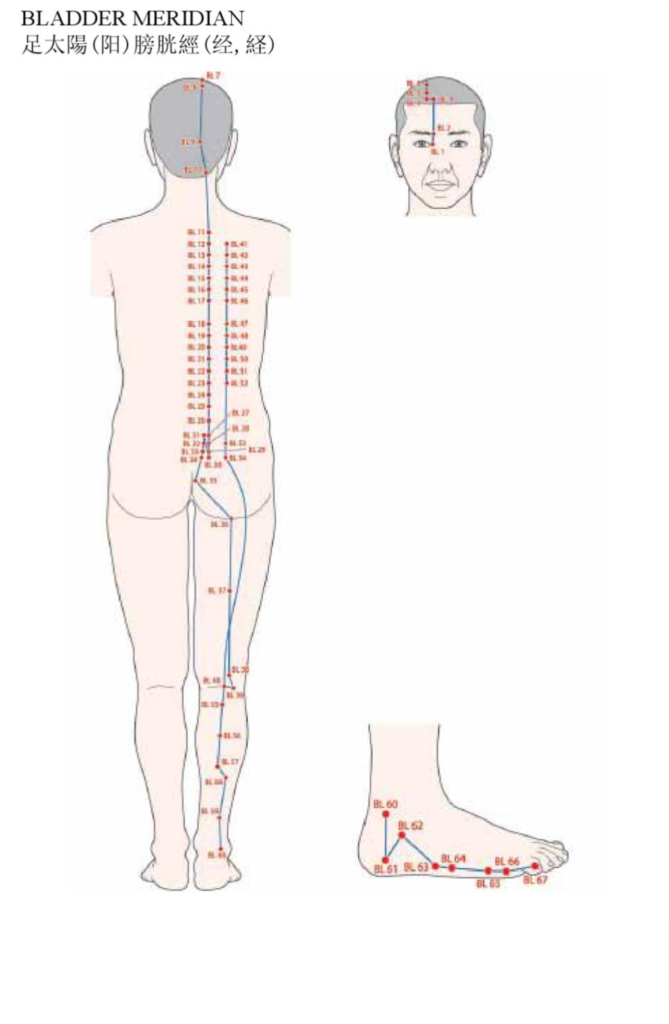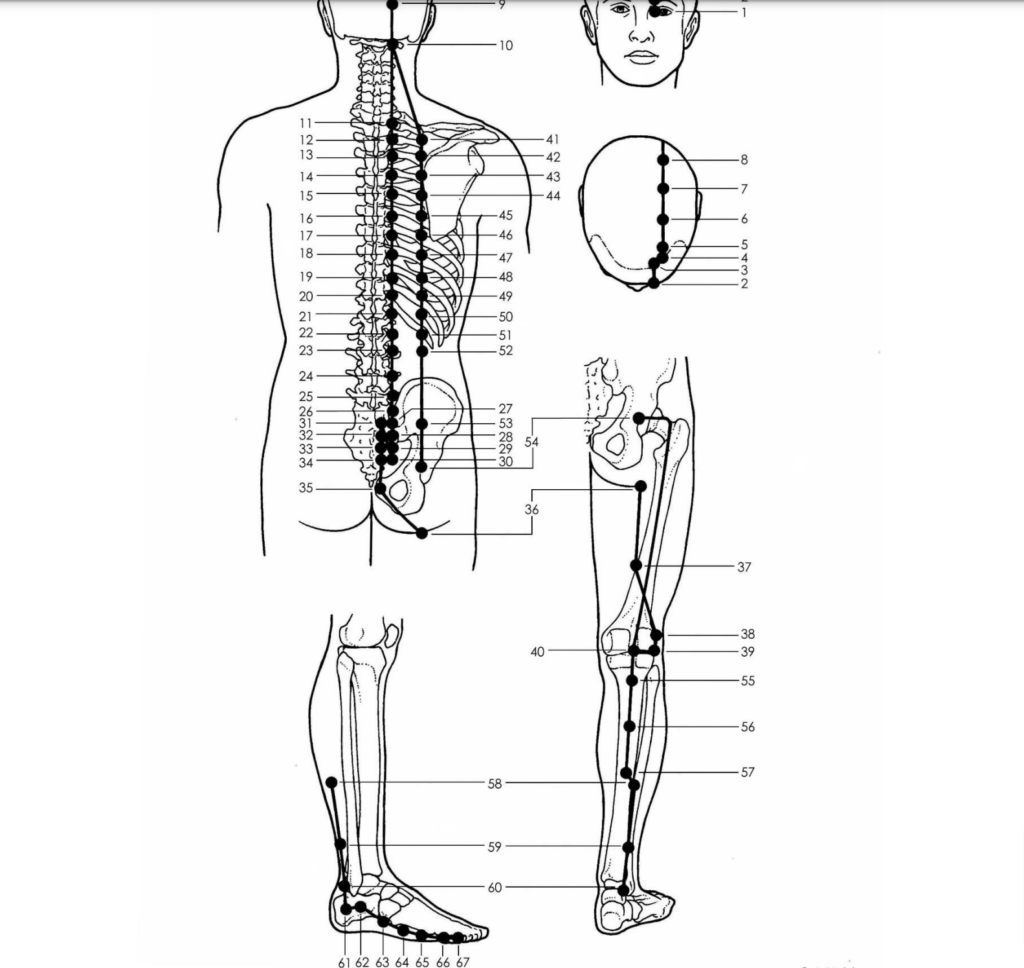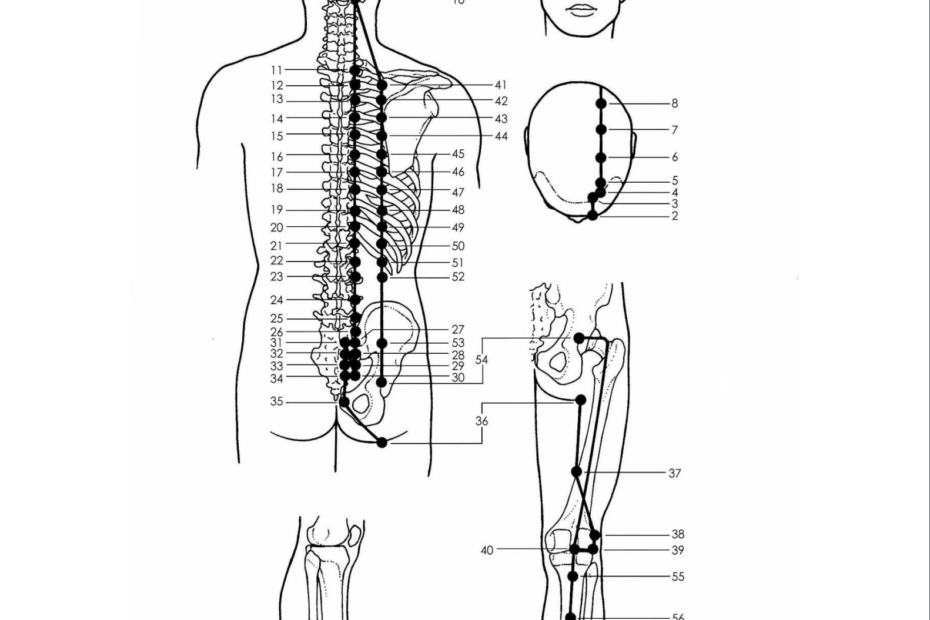The Bladder Meridian starts at the inner side of the eye and goes across the forehead to reach the top of the head where it branches into the brain. The main channel then goes across the back of the head and divides into two branches. One branch crosses the center of the base of the neck and extends downwards parallel to the spine. Once in the lumbar region (bottom of the spine), it branches out to reach the bladder. The other branch crosses the back of the shoulder and runs downward on the outside, which is adjacent and parallel to the inner branch.

It continues down until it reaches the buttocks where two branches run across the back of thigh along different pathways that join at the back of the knee. The joint meridian then continues along the back of the lower leg, circles behind the outer ankle, runs along the outside of the foot and terminates on the lateral side of the tip of the small toe, where it connects with the Kidney Meridian.

The Bladder channel is a yang channel that consists of 67 points. It originates at the medial aspect of the eye and runs over the forehead across the top of the head then goes across the back of the head to the neck where it divides into two branches. One branch extends caudad down the back at a distance of 1.5 cun parallel to the midline of the spine until it reaches the level of the 4th sacral foramen. The other branch crosses the back of the shoulder and runs downward 3 cun from the midline parallel to the inner branch.

It continues down until it reaches the buttocks where two branches run across the back of thigh along different pathways that join at the back of the knee. The joint meridian then continues along the back of the lower leg, circles behind the outer ankle, runs along the outside of the foot and terminates on the lateral side of the tip of the 5th toe, where it connects with the Kidney Meridian. The Bladder channel is another extensive meridian which runs the entire length of the body but it however utilises various points along its length to aid in the treatment of musculoskeletal conditions. The Bladder points commonly used in the management of musculoskeletal pain and dysfunction are BL 10, BL 11 in the cervical region, BL 23, BL 25 in the lumbar region, BL 40 at the knee and BL 60 and BL 62 at the ankle.
Leave your ⭐️⭐️⭐️⭐️⭐️ review to show us your support!
Acupuncture Channels/Meridians
Leave your ⭐️⭐️⭐️⭐️⭐️ review to show us your support!
